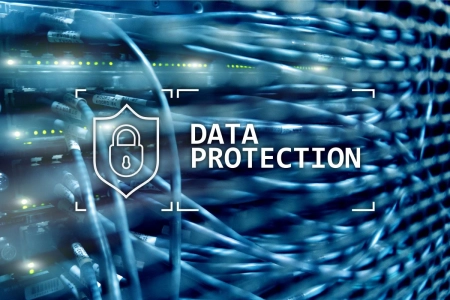Data masking replaces real information with altered values that look authentic but carry no risk. It’s used when teams need functional data without exposing sensitive details. Development, analytics, and user training all rely on this method to keep private records out of test systems and email attachments.
It’s a quiet control but an essential one. Every time real customer or patient data is exported for testing or shared through email, the risk of exposure rises. Masked data removes that risk by ensuring the information can’t be traced back or reverse-engineered. That’s the core idea behind most data masking tools and the reason they’re central to modern data compliance.
Why Businesses Depend on Data Masking Software for Email
Email remains one of the most common ways sensitive data leaks. Attachments, spreadsheets, or reports move freely between internal teams and vendors. Data masking software protects against that by removing identifiable values before files ever leave a controlled environment.
A good data masking tool does a few things well:
- Keeps real data out of shared email workflows and test systems.
- Preserves structure so developers can still work effectively.
- Helps meet privacy requirements under GDPR, HIPAA, and PCI.
- Makes stolen or misplaced data meaningless to attackers.
For compliance and security teams, it’s a low-friction way to reduce exposure without limiting business activity.
How Data Masking Works
Masking doesn’t rely on one method. It uses several. Each approach fits a specific use case or system.
Common techniques include:
- Static masking for fixed datasets is used before data is stored or shared.
- Dynamic masking that hides fields in real time from unauthorized users.
- Deterministic masking to keep identical inputs mapped consistently.
- On-the-fly masking during transfers or data migration.
- Statistical obfuscation that changes numbers while preserving relationships.
These techniques allow data to keep its analytical value while staying anonymous. The goal is always the same: usable, realistic data that can’t expose anyone if it’s sent, lost, or leaked.
Leading Data Masking Tools
Several mature platforms handle this work at enterprise scale. Below are five that are widely deployed across industries for both internal protection and data compliance.
K2View Data Masking
K2View data masking identifies and classifies sensitive data automatically. It applies masking rules across structured and unstructured sources, from databases to flat files. Because it integrates with most architectures, it fits easily into environments where data moves through multiple systems or email-based workflows. It’s often chosen for scale and speed rather than complexity.
BizDataX
BizDataX creates synthetic, anonymized datasets for developers and testers. It keeps relationships intact, so testing remains accurate but private. The tool’s continuous analysis helps track dataset health and ensures masked records meet regulatory standards. It’s straightforward for teams focused on privacy-by-design.
Informatica
Informatica offers masking that preserves data integrity across complex databases. Rules can be tailored per column or data type, which helps when masking personal data stored in customer records. It’s used heavily in enterprises where data compliance is audited regularly.
Mage Data
Mage Data’s iMask tool works across multiple sources, including cloud storage and big data platforms. Its discovery module finds hidden sensitive data in archives, shared folders, or even old email systems before masking begins. It’s built for organizations cleaning up legacy data while moving to cloud platforms.
Baffle
Baffle applies masking transparently, sitting between data sources and applications without requiring code changes. It supports many masking formats and helps meet global privacy frameworks like GDPR and HIPAA. It’s commonly deployed when teams need a lightweight layer that protects exported or emailed datasets.
Choosing the Right Data Masking Tool
Selecting a tool depends on where your risks exist and how your teams work. Most organizations look at:
- Data types and locations — cloud, on-premises, or hybrid.
- Integration with existing data compliance systems.
- Ability to mask before data is shared through email or external reports.
- Automation features for ongoing masking and verification.
- Scalability as new datasets appear.
A small team might need a simple static masking tool. An enterprise handling millions of records may need automated discovery, policy enforcement, and audit tracking. The key is choosing what fits your workflow, not the biggest feature list.
Data Masking’s Role in Email Security
Email exposure happens more often than hacking. Reports sent to the wrong address, attachments copied between departments, or exports stored in inboxes can all leak data. Data masking limits the damage. If personal information has already been replaced or encrypted before sharing, the exposed file contains nothing valuable.
For compliance teams, it’s an additional safety net. Even if encryption or access control fails, masked data keeps personal information unreadable. It supports a layered approach to email security where no single mistake leads to disclosure.
Final Takeaway
Data masking is a quiet but critical control. It keeps private data usable for business while protecting it from exposure, both in systems and over email.
The best data masking tools integrate easily, automate policy enforcement, and meet global data compliance requirements without slowing work. For most organizations, it’s one of the simplest ways to protect sensitive data before it ever becomes a risk.


